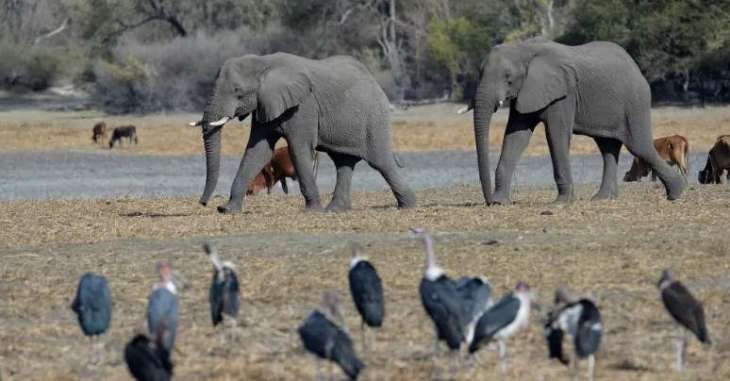Authorities of Botswana believe cyanobacteria were behind the mysterious mass deaths of elephants in the country throughout the summer, Mmadi Reuben, the chief veterinarian at the Botswanan Department of Wildlife and National Parks, said on Monday
MOSCOW (Pakistan Point News / Sputnik - 21st September, 2020) Authorities of Botswana believe cyanobacteria were behind the mysterious mass deaths of elephants in the country throughout the summer, Mmadi Reuben, the chief veterinarian at the Botswanan Department of Wildlife and National Parks, said on Monday.
In late August, the Botswanan government sounded alarm after the number of elephants who died since early May surpassed 300. A series of tests were conducted, including in other African countries, to figure out what had caused the animals' death and whether the pathogen was natural or man-made.
"We [have conducted] an evaluation of cyanobacteria in the samples that were submitted and we indeed detected those, leading to a diagnosis [that] cyanobacterial neurotoxins [were] the cause of mortality for these elephants," Reuben told a briefing, broadcast by the Botswanan government on Facebook.
This makes sense as elephants are the only animals that drink below the water surface and, therefore, run a risk of sucking the silt in low-depth areas, which is really where the cyanobacteria live, the official explained.
According to the official, tests found no traces of bacterial infections, heavy metals or pesticides in the samples.
Reuben said more questions have yet to be answered, including, for example, why the death of elephants was limited to only one particular area and why only elephants as a species died.
As specified by the acting director of the Department, Cyril Taolo, a total of 330 elephants died in Botswana so far.
In late August, Zimbabwe began reporting deaths among its elephants too, which by now surpassed 20 in number. According to the preliminary version of the Zimbabwe National Parks and Wildlife Management Authority (Zimparks), the death was caused by the bacterial infection with anthrax.




